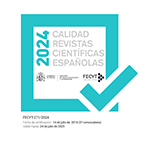Homologías: Sobre la crítica de la religión del cielo y la crítica de la religión terrestre
Résumé
En este artículo exploramos analogías estructurales entre las esferas de la teología, la epistemología y la política desde una perspectiva dialéctica. El punto de partida es la constatación de que la «reificación» o «cosificación» de la totalidad se expresa como negación de la alteridad.
En la esfera teológica, la estructura se define en términos de «inmanencia-trascendencia». En este campo, el marco inmanente puede estar cerrado en sí mismo, como ocurre con el naturalismo fisicalista que se presenta como «la totalidad (el universo físico) que contiene todas las totalidades», o puede permanecer abierto a su exterioridad o trascendencia. En la esfera epistemológica, el círculo de representaciones que conforma la correlación sujeto-objeto, la relación mente-mundo, la topología interior-exterior, puede interpretarse como una totalidad primitiva e insuperable, el llamado «círculo correlacional»; o puede permanecer abierta a su trasfondo. En la esfera política, la modernidad capitalista, como totalidad histórica, puede presentarse como «fin de la historia», y expresarse como negación de sus exterioridades —las poblaciones excluidas, la naturaleza no humana, y las generaciones venideras—, o someterse al veredicto de injusticia de sus víctimas, y asumir la responsabilidad de los efectos no deseados producidos por su ceguera.
Estas estructuras ponen de manifiesto una cuestión transhistórica, relativa al problema de la objetividad del mundo que emerge de nuestra condición finita. Pero también nos plantean una cuestión histórica, relativa a la autocomprensión de la modernidad, a la lógica intrínseca del orden capitalista, y a los horizontes de la era postsecular.
Téléchargements
##submission.format##
Licence
La revista 'Ilu. Revista de Ciencias de las Religiones, para fomentar el intercambio global del conocimiento, facilita el acceso sin restricciones a sus contenidos desde el momento de su publicación en la presente edición electrónica, y por eso es una revista de acceso abierto. Los originales publicados en esta revista son propiedad de la Universidad Complutense de Madrid y es obligatorio citar su procedencia en cualquier reproducción total o parcial. Todos los contenidos se distribuyen bajo una licencia de uso y distribución Creative Commons Reconocimiento 4.0 (CC BY 4.0). Esta circunstancia ha de hacerse constar expresamente de esta forma cuando sea necesario. Puede consultar la versión informativa y el texto legal de la licencia.











